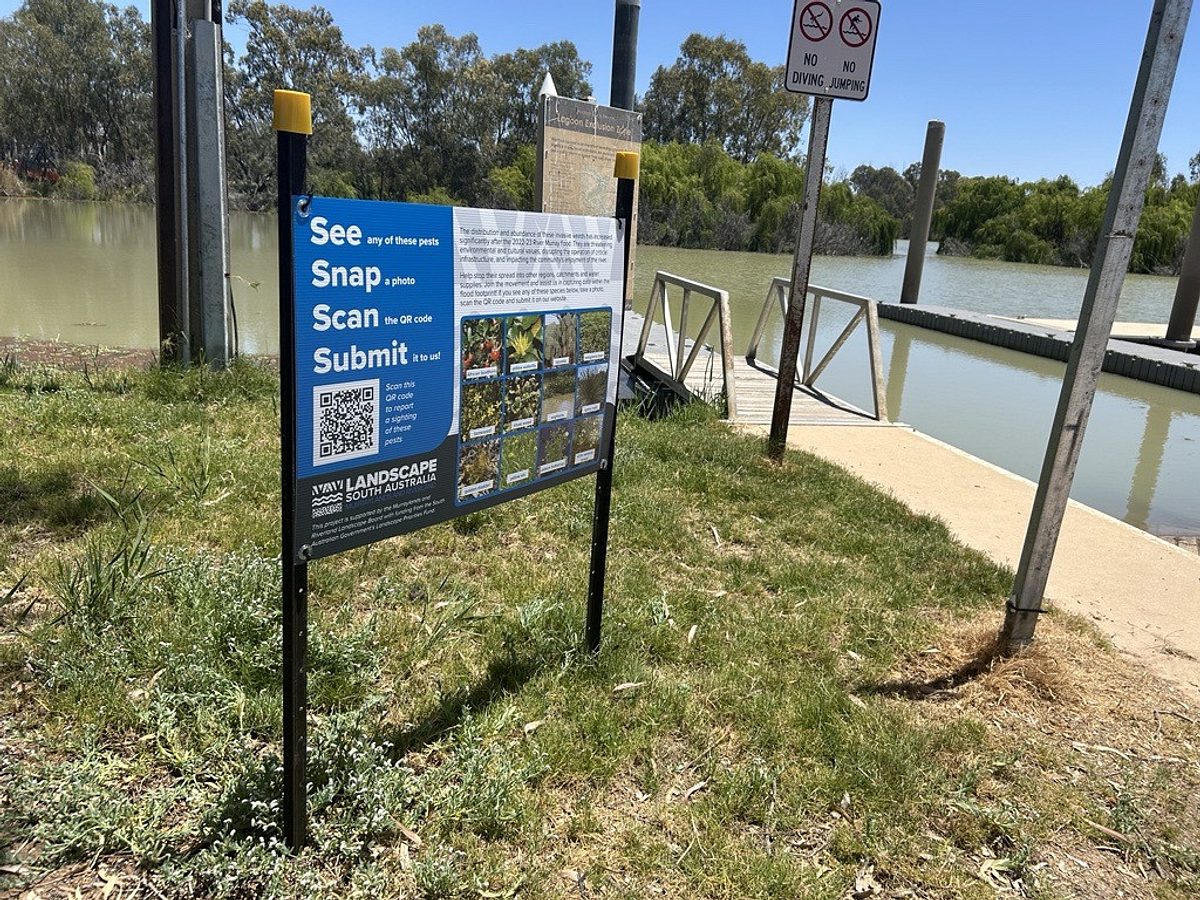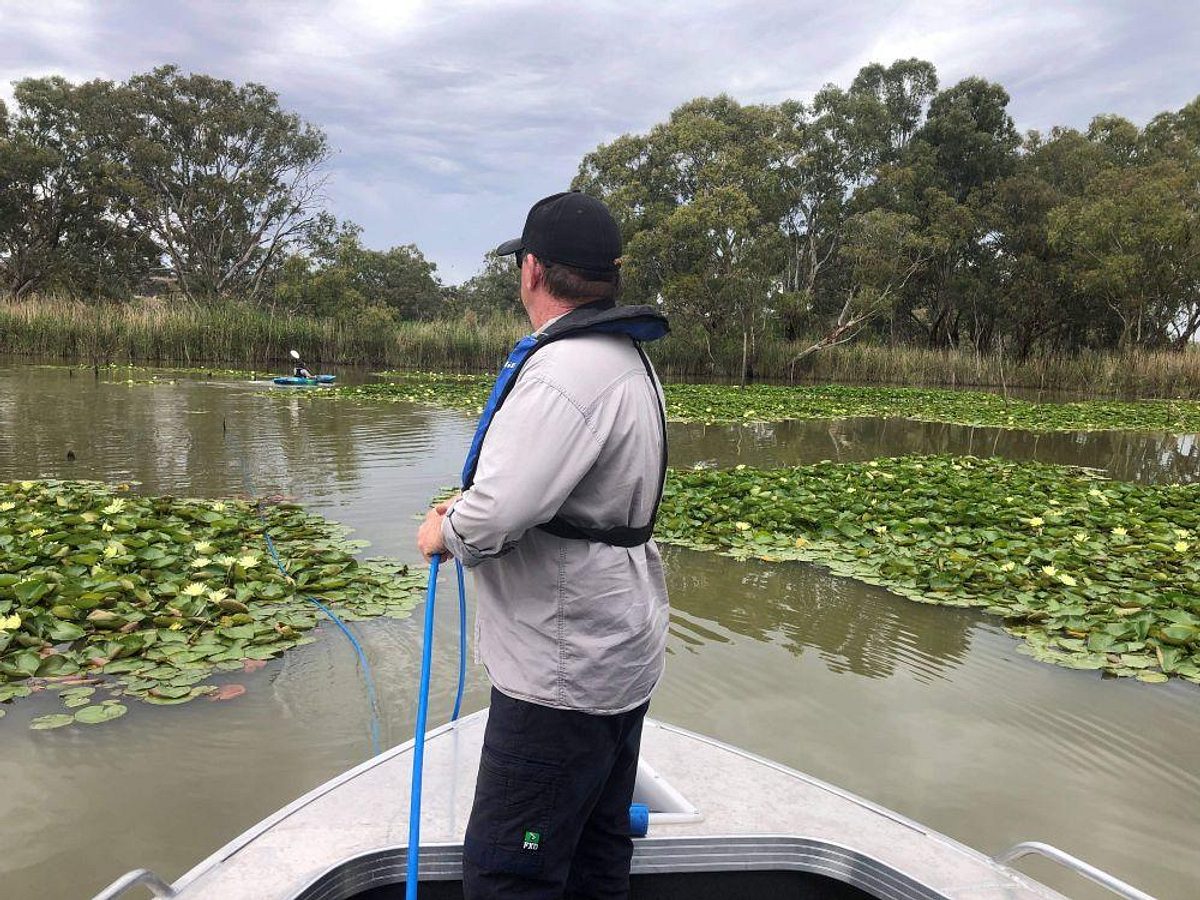Water affecting activities - what every landholder needs to know about them

In the Murraylands and Riverland region, water is essential to our environment, industries, and communities. Managing this precious resource sustainably is essential to support local ecosystems, maintain water quality, and make sure water is shared fairly.
One way that the landscape board manages water resources is to ensure that water affecting activities (WAAs) that could affect watercourses, lakes, floodplains, and other vital water areas are assessed to ensure that they don’t create negative impacts on the water resource, the environment, or other water users.
A permit system has been established, under the Landscape South Australia Act 2019, to regulate the types of works and activities that are deemed WAAs. It is important to consider whether you need to apply for a WAA permit before you commence any work. A WAA permit is a legal requirement if the work or activity is assessed as requiring one.
Remember, what you do on your property has the potential to significantly affect your neighbours and/or the environment, both upstream and downstream!
Why do I need a WAA permit?
Permits are required for water affecting activities to ensure that any work done near water is carefully reviewed and managed, and any risks are addressed. The landscape board uses the permitting system to check that proposed activities won’t create negative impact for the environment or other water users. The Landscape South Australia Act 2019 lists the types of activities that may require a permit. If you carry out a WAA without the proper permit, or don’t follow the conditions outlined in the permit, it can be considered an offence.

What kind of activities require a WAA permit?
WAAs include, but are not limited to the following:
- Building or modifying dams: This includes the construction, modification, enlargement, or removal of a dam, wall, or other structures.
- Building a structure: Installation of buildings or structures such as a pump house (less than 10m2), culvert, bridge or fencing.
- Drainage or discharge of water: Constructing drains or outlets that discharge water into a watercourse, lake, or floodplain.
- Obstructing or depositing solid material in a watercourse: Actions that block or hinder the natural flow of water, including installing barriers (e.g. piers for a bridge), depositing soil, rocks or vegetation, an island in a dam, ford crossings and levee banks.
- Excavation of rock, sand, or soil: Removing materials directly from the bed or banks of a watercourse, lake or floodplain. This includes desilting a dam in a watercourse, desilting wetlands swamps and springs and any alterations of a watercourse.
- Vegetation clearance near water: Removing trees, shrubs, reeds, and grasses.
What’s the difference between watercourse, lake, and floodplain?
In the Murraylands and Riverland region, understanding the difference between a watercourse, lake or floodplain is important for managing water resources and knowing when you might need a permit for your activities.
A watercourse is a river, creek, or other natural watercourse (whether modified or not). This could be a small stream or large river, and the water may flow permanently, or at certain times, depending on rainfall or seasonal conditions. Some watercourses are clearly marked with banks and a bed, but in some areas the watercourse might not be obvious, especially if its hidden by vegetation or even concrete lining. If unsure if an area on your property is a watercourse, contact water resources staff or use Nature Maps to check.
A lake refers to a natural body of water, such as a lake, pond, lagoon, wetland, or spring, regardless of whether it’s been modified or not.
A floodplain is an area of land next to a watercourse, lake or estuary that’s periodically covered by water. It also includes other areas specifically designated as a floodplain.
What are my responsibilities as a landholder?
If you have a watercourse or lake on your property, you are responsible for protecting and maintaining it.
If you have a dam on your property, you are also responsible for its upkeep and liable for any damage it may cause if it were to fail.
In South Australia, all landholders have a general statutory duty of care to act reasonably and responsibly when it comes to landscape management. This includes an obligation to maintain and not damage watercourses, floodplains, or lakes.
Pro Tip: Regularly inspect your dams and water features to catch potential issues early.
If you’re planning a project near a water feature, follow the steps outlined in our water affecting activities webpage and contact the Water Planning and Assessment Officer before submitting your application to discuss the details of your proposal.


